DIY Platform to Simplify Your SEO Routine
Monitor and fix all SEO issues with step-by-step instructions and improve website visibility for users and search bots.
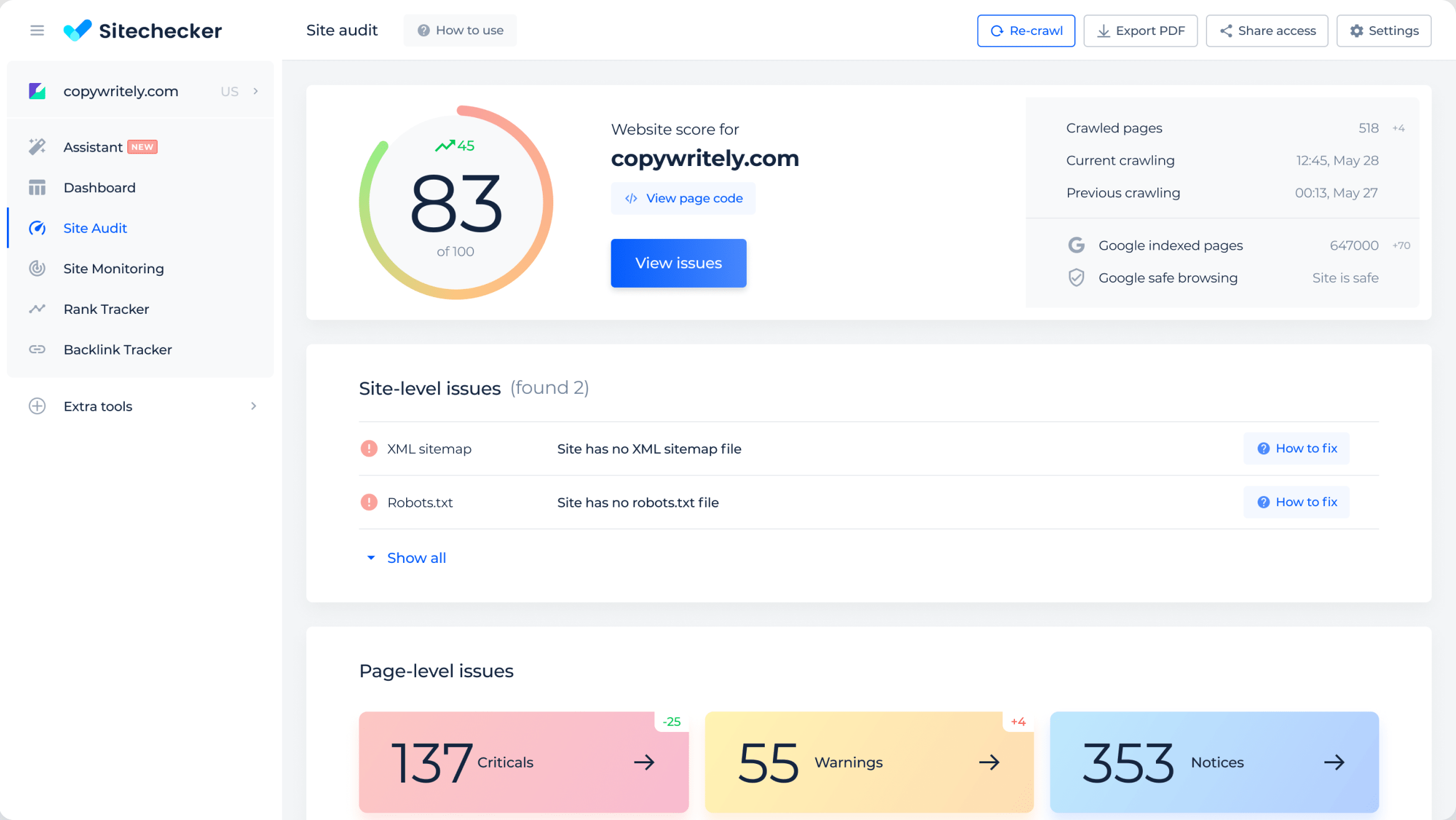




Spending too much time on SEO, not your business?
Sitechecker is the platform tailored for your needs
Easy to use
Our customers note that Sitechecker’s design is one of its main advantages.
How-to guides
Get detailed text and video tips on how to use seo analysis tools and improve your website.
Alerts & reports
Get instant alerts when something critical happens to your site.
All-in-one platform
Monitor website health, track keywords, and backlinks all on one seo software platform.
How Sitechecker can maximize the value of your website
Run a full SEO website analysis without waiting on an expert’s help
Get a report with all website technical issues (like low website speed, broken links, etc.) that you should fix to improve the user experience and increase organic traffic. However, you don’t need extensive SEO knowledge. Just follow the step-by-step instructions from Sitechecker’s SEO assistant.
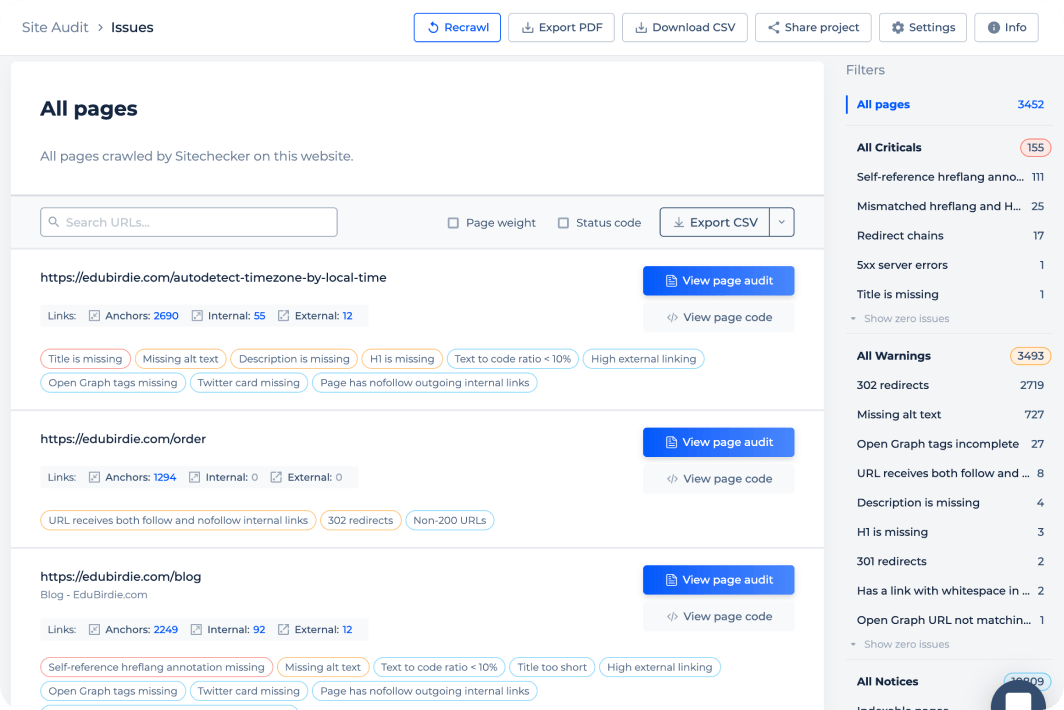
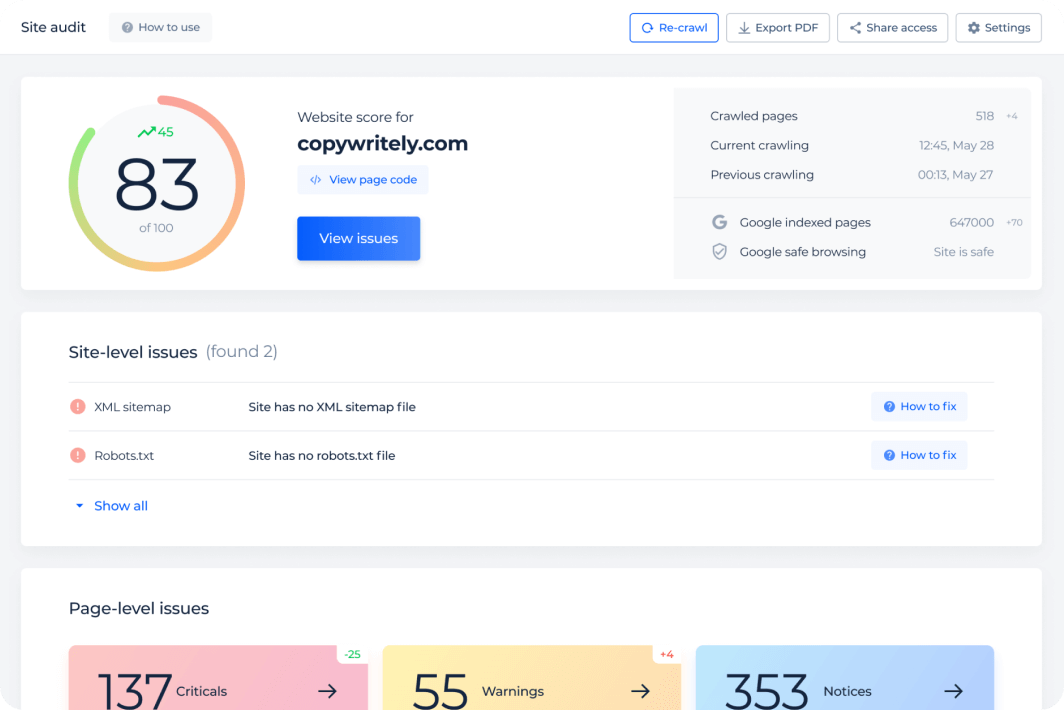
Demonstrate the ROI of SEO with PDF reports
Easy-to-interpret reports for your colleagues and stakeholders make it clear that SEO improvements are directly beneficial to business goals. Share the data to demonstrate the value of your work and build a new digital strategy based on actual results.
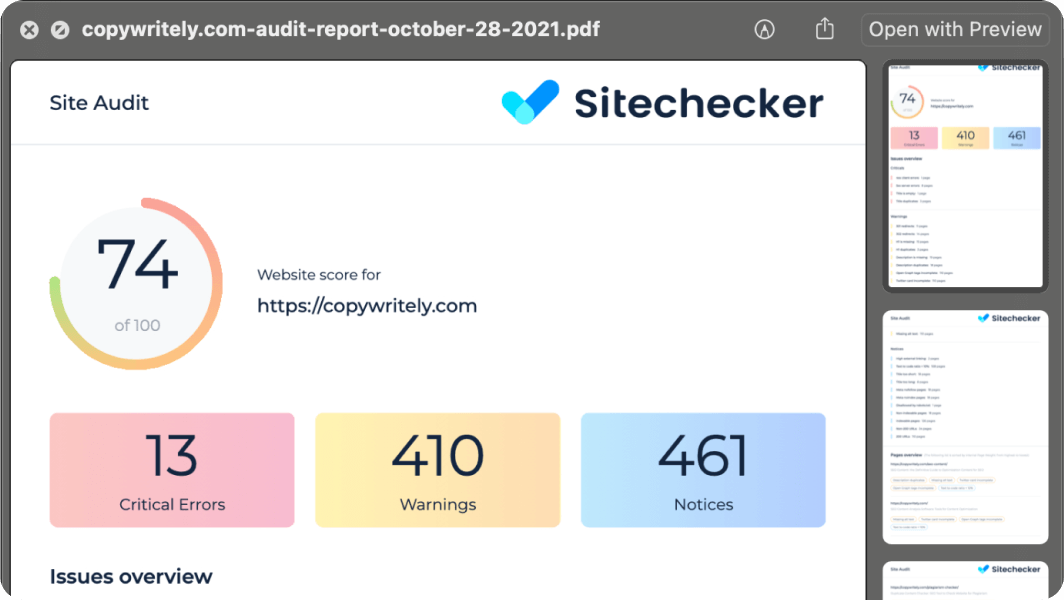
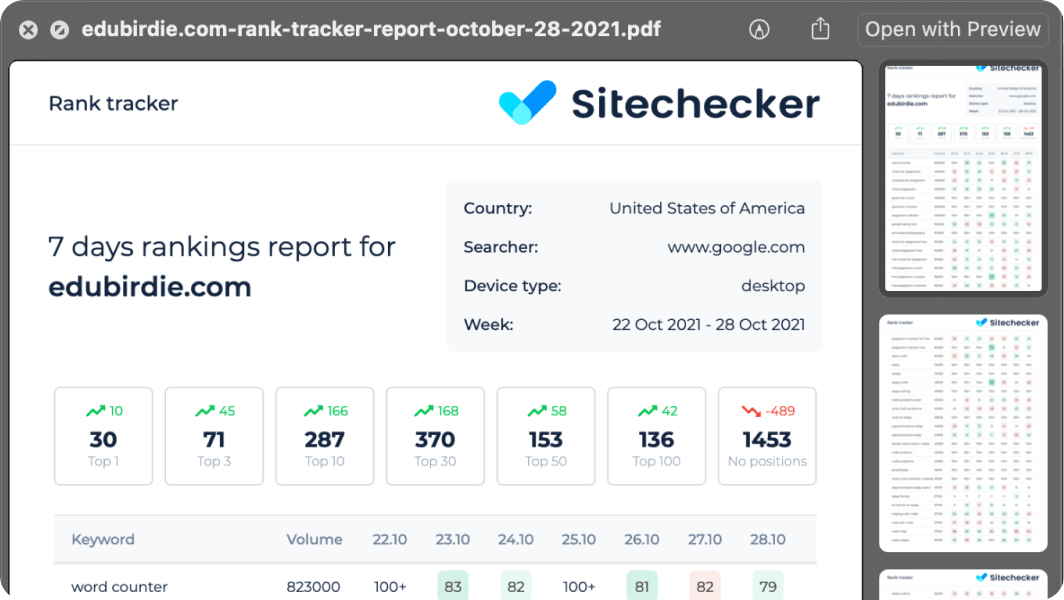
Catch website issues before they spiral out of control
Sitechecker monitors your website 24/7 and keeps track of changes around the clock. Get immediate email alerts if your website goes down, important pages become non-indexable, or a content manager changes page titles on key landing pages.
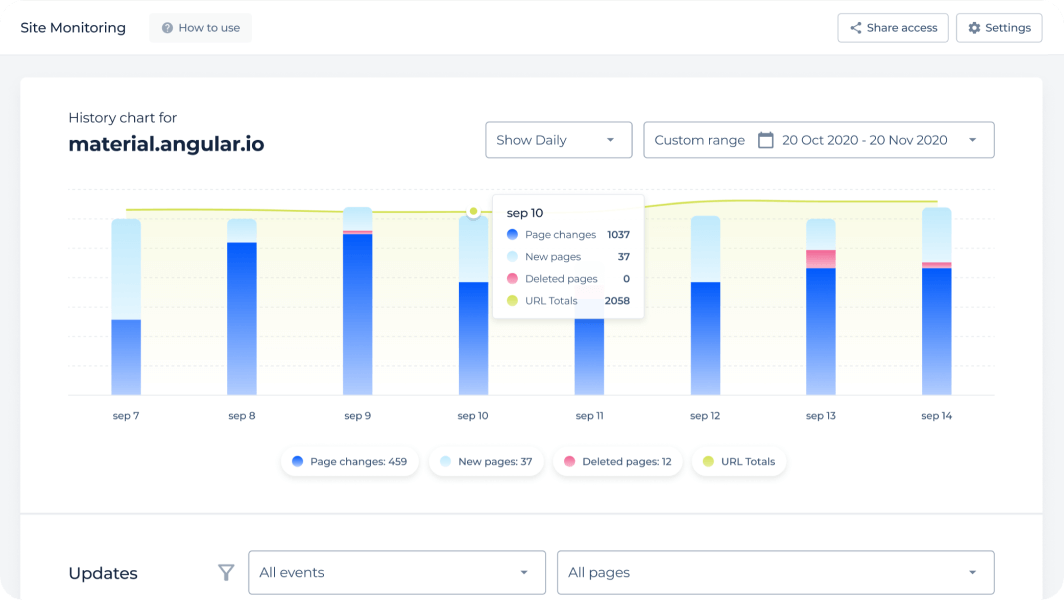
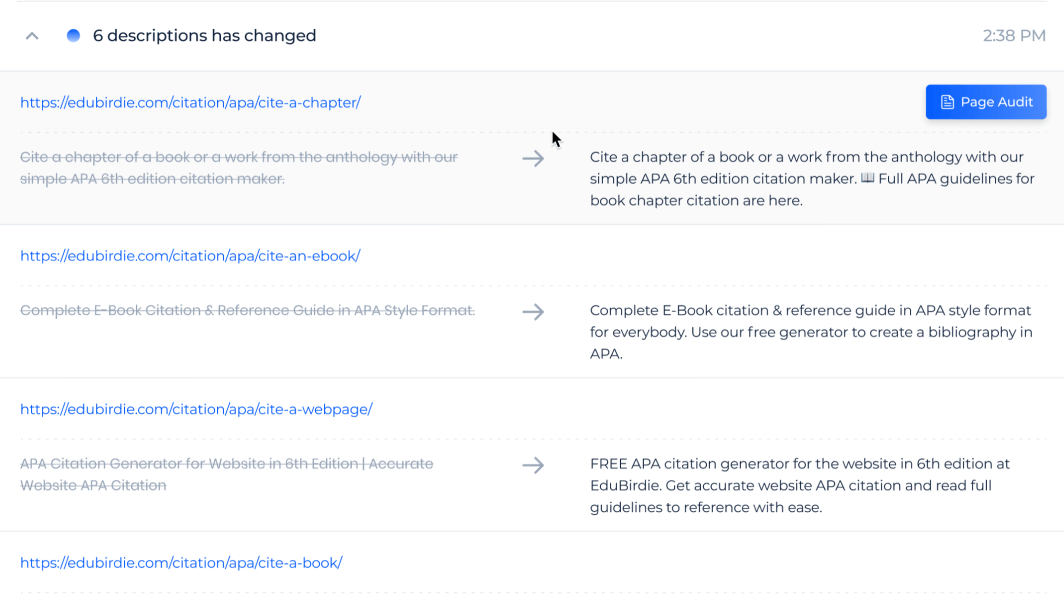
Target the right customers with the right keywords
Use always up-to-date keyword data to understand how customers find your website. Get suggestions for new relevant keywords to create new pages and reach more customers. Track website positions on Google, Bing, Yahoo, and Yandex, on mobile and desktop, in any country and city.
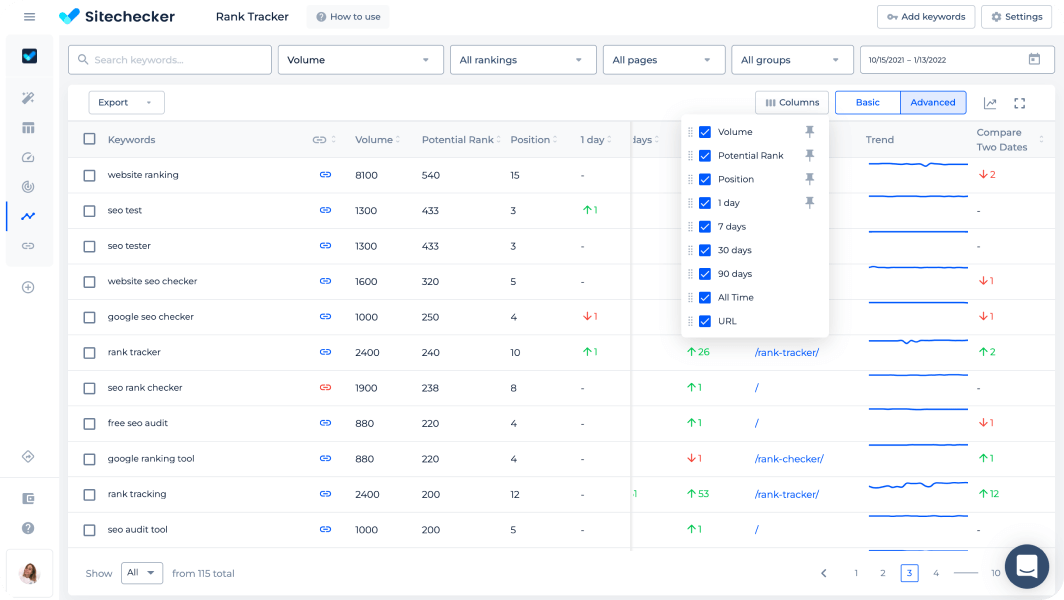
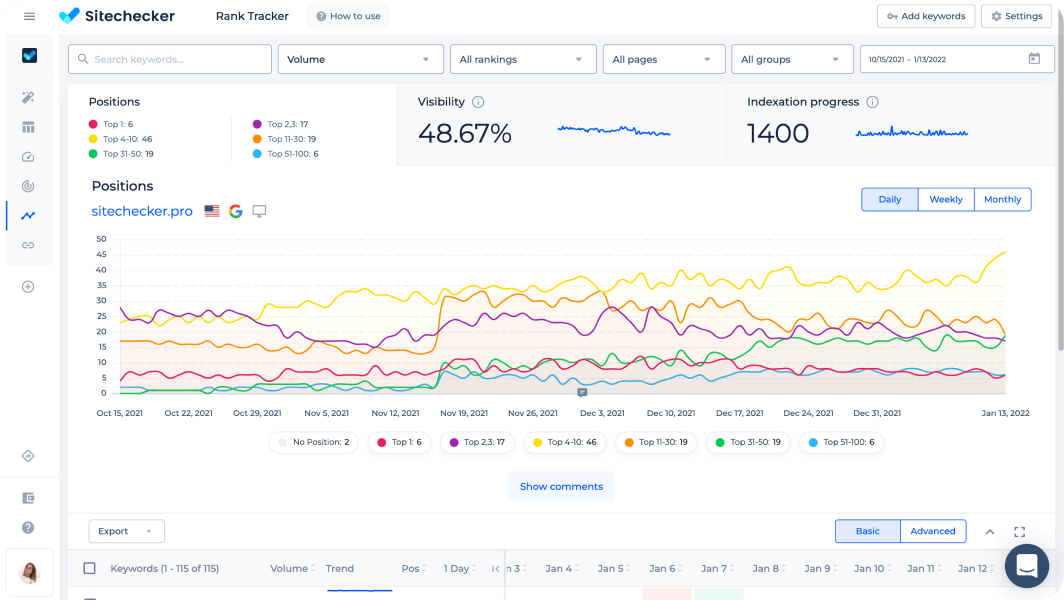
Monitor all important metrics in one dashboard
Automatically collect data from Google Analytics, Google Search Console, Backlink Tracker, and Rank Tracker in one platform instead of navigating between several additional tools. Optimize your workflow and save time by analyzing and testing new hypotheses based on current data.
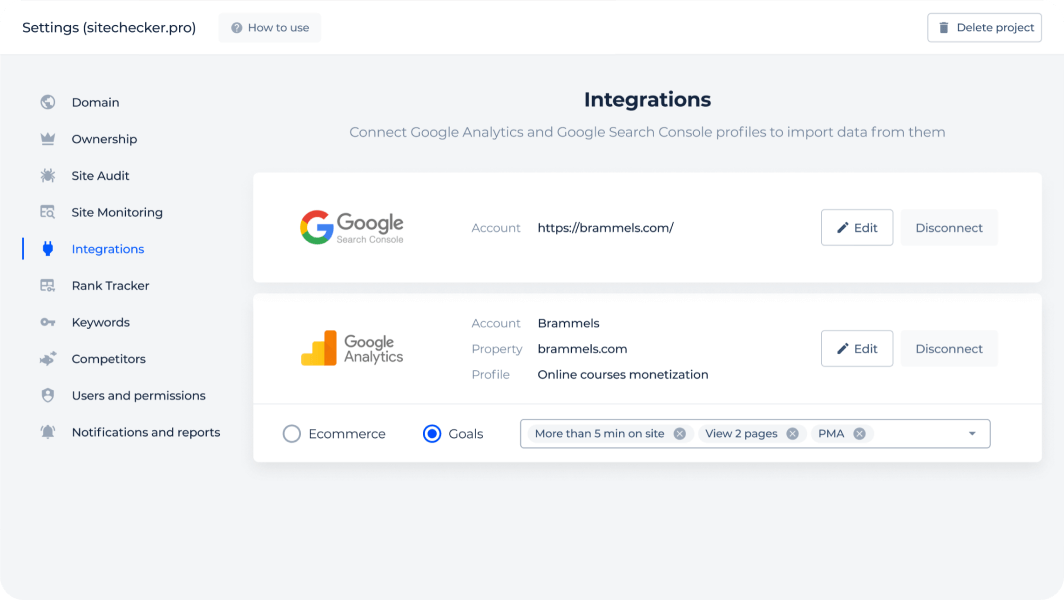
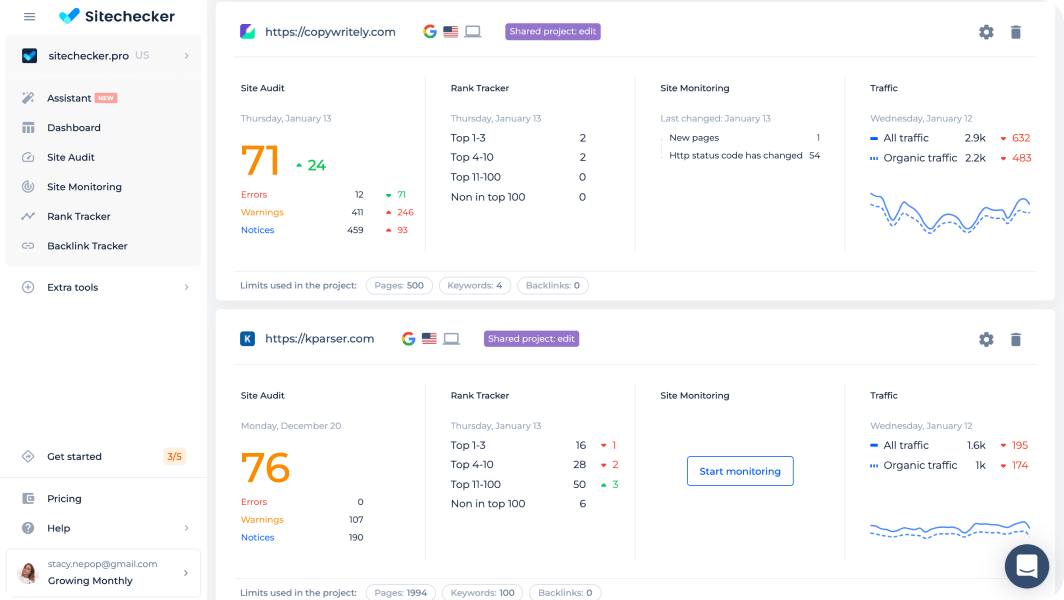
Cost-effective SEO toolkit for your agency
-
Fix technical and on-page SEO
Site Audit -
Track website changes 24/7
Site Monitoring -
Track keywords rankings
Rank Tracker -
Monitor backlinks
Backlink Tracker -
Analyze easy-to-interpret SEO reports
White Label -
Quickly check on competitors
SEO Chrome Extension
Join 200+ digital marketers using Sitechecker




